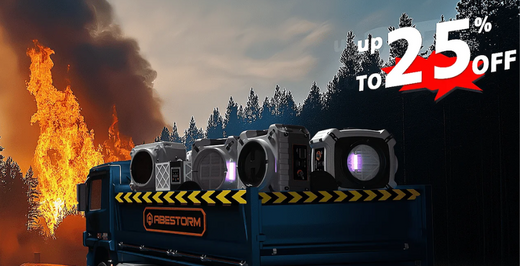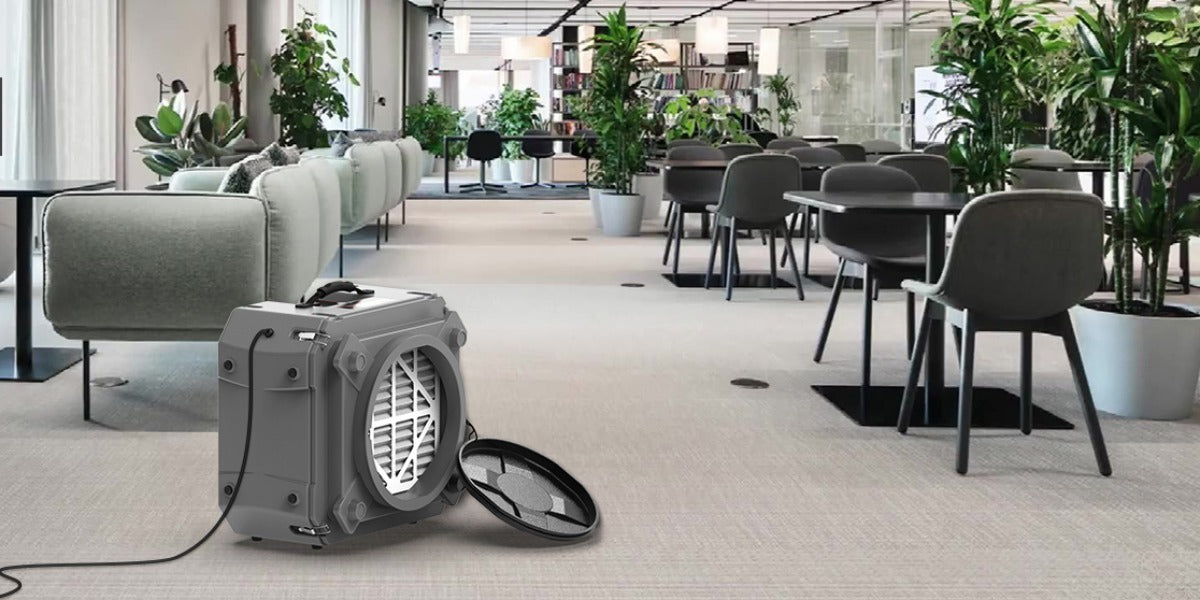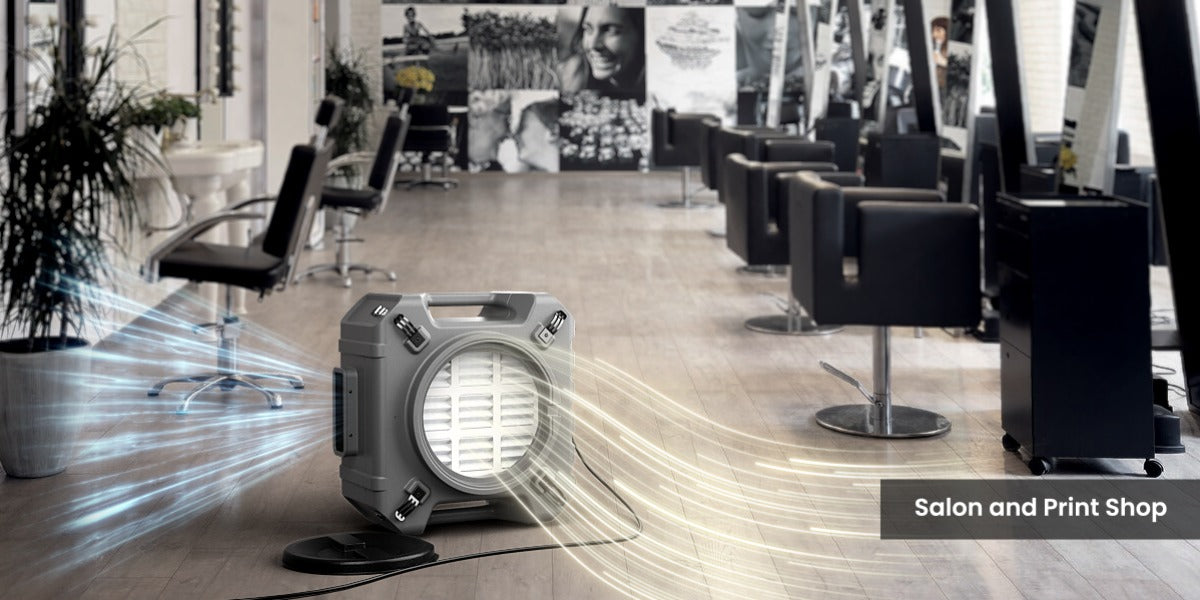As summer temperatures soar, so does the humidity, turning many homes into uncomfortable, damp environments. Managing moisture is crucial, particularly in crawl spaces, where humidity can accumulate and lead to various issues. Utilizing a crawl space dehumidifier not only enhances comfort but also safeguards the structural integrity of your home. This blog explores how installing a dehumidifier in your crawl space can transform sticky summers into seasons of comfort and health.
The Role of Crawl Spaces in Home Humidity
Crawl spaces, often overlooked, play a significant role in the overall humidity management of a home. These under-house areas are prone to moisture accumulation due to their proximity to the ground and limited airflow. Without proper management, the humidity in crawl spaces can lead to mold growth, wood rot, and even pests—all of which threaten the home’s structure and indoor air quality.
Humidity Challenges in Crawl Spaces
The primary challenge with crawl spaces is their tendency to trap moist air, especially during the humid summer months. This environment creates a breeding ground for mold and mildew, which can spread to other parts of the home, exacerbating allergies and respiratory conditions. Moreover, excessive moisture can cause structural components like beams and flooring to deteriorate over time.
To effectively combat these issues, understanding how do crawl space dehumidifier work is essential. These devices are designed to maintain optimal humidity levels, preventing the conditions that lead to moisture-related problems. By installing a dehumidifier for your crawlspace, you take a proactive step towards protecting your home and enhancing the comfort of your living spaces.
How Do Crawl Space Dehumidifiers Work?
Crawl space dehumidifiers are critical for controlling humidity and preventing the adverse effects of moisture in a home's lower areas. These devices are specifically designed to tackle environmental challenges unique to crawl spaces, ensuring these areas remain dry and ventilated.
Mechanism of Action
Crawl space dehumidifiers operate by pulling in moist air from the surrounding environment through a fan system. The air passes over a cooled coil, causing the moisture in the air to condense into water. This water is then collected in a drain pan or directly expelled outside through a drainage system. The dry air is reheated to room temperature and circulated back into the crawl space, reducing the overall humidity levels.
The process is continuous, ensuring that humidity in the crawl space remains at a healthy level, thus protecting the structural integrity of the home and improving the indoor air quality. The effective functioning of these systems answers the question of how do crawl space dehumidifiers work by demonstrating their ability to maintain optimal conditions to deter mold growth and moisture accumulation.
Benefits of Installing a Dehumidifier in Your Crawl Space
Installing a dehumidifier in your crawl space comes with several significant benefits that extend beyond just reducing humidity levels. These benefits of a dehumidifier emphasize the importance of maintaining a dry crawl space, not only for the health of the building’s structure but also for the well-being of its inhabitants.
Improved Air Quality
By controlling moisture, crawl space dehumidifiers help prevent the growth of mold and mildew, which are known to cause and exacerbate respiratory issues such as asthma and allergies. This directly enhances the air quality throughout your home, creating a healthier living environment.
Structural Integrity
Moisture is one of the primary enemies of structural health, particularly in wood-based structures. Prolonged exposure to high humidity can lead to wood rot, which compromises the building’s strength. By maintaining a dry environment, dehumidifiers protect the structural integrity of your home.
Energy Efficiency
Moist air is harder to cool or heat, which can lead to increased energy costs. A dehumidifier helps maintain a more consistent humidity level, which can make heating and cooling systems operate more efficiently, thus reducing overall energy expenses.
Pest Reduction
High humidity attracts pests such as termites and carpenter ants that thrive in moist wood environments. Keeping your crawl space dry helps deter these pests, protecting your home from potential infestations.
Each of these benefits underscores why incorporating a dehumidifier for crawlspace is a wise investment, particularly for homeowners looking to enhance their living conditions and protect their investment from humidity-related damage.
Does an Encapsulated Crawl Space Need a Dehumidifier?
Encapsulation is a popular method for managing moisture in crawl spaces by sealing them with a heavy-duty moisture barrier. This process significantly reduces moisture intrusion from the ground and the outside environment. However, the question remains: Does an encapsulated crawl space need a dehumidifier?
The Role of Dehumidifiers in Encapsulated Crawl Spaces
Even with encapsulation, some moisture can still enter the crawl space, primarily through the air and internal sources like plumbing leaks. While encapsulation greatly reduces moisture levels, it doesn't eliminate the need for humidity control. A dehumidifier in an encapsulated crawl space ensures that any residual moisture is effectively managed, maintaining optimal humidity levels and further protecting against mold and structural damage.
Choosing the Right Dehumidifier for Your Crawl Space
Selecting the right dehumidifier for your crawl space is crucial to effectively managing humidity and ensuring the longevity and safety of your home. Here are several factors to consider when choosing a crawl space dehumidifier:
Size and Capacity
Choose a dehumidifier with the right capacity for your crawl space. This is typically measured in pints of moisture removed per day. A unit too small won't effectively control humidity, while an overly large unit may lead to unnecessary energy consumption. Learn here How to Choose the Right Size Dehumidifier for Your Space.
Energy Efficiency
Look for dehumidifiers with Energy Star ratings to ensure they operate efficiently. This not only helps in reducing your energy bill but also contributes to environmental conservation.
Continuous Drainage Options
Opt for dehumidifiers with continuous drainage features. These allow the unit to run continuously without the need for manual emptying of the collection tank, providing hassle-free operation.
Humidistat Functionality
A built-in humidistat allows you to set the desired humidity level that the dehumidifier will automatically maintain. This feature is essential for keeping consistent conditions in your crawl space without manual adjustments.
Conclusion
The importance of maintaining a dry crawl space cannot be overstated, especially during the humid summer months. Dehumidifiers for crawlspace play a crucial role in preserving the structural integrity of your home, improving indoor air quality, and enhancing overall comfort. By understanding how these systems work and selecting the right model, you can effectively combat humidity and its associated problems.
Investing in a quality dehumidifier for your crawl space is a proactive step towards a healthier, more comfortable home. Ensure that you choose a system that fits your specific needs and complements any existing moisture control strategies like encapsulation.
Ready To Improve The Air Quality And Comfort Of Your Home?
Visit Abestorm.com to explore our top-of-the-line crawl space dehumidifiers. Our experts are also on hand to provide guidance and help you select the perfect system for your home. Don't let humidity compromise your comfort and safety—act today and enjoy a fresher, drier home environment.









Shop For Dehumidifier